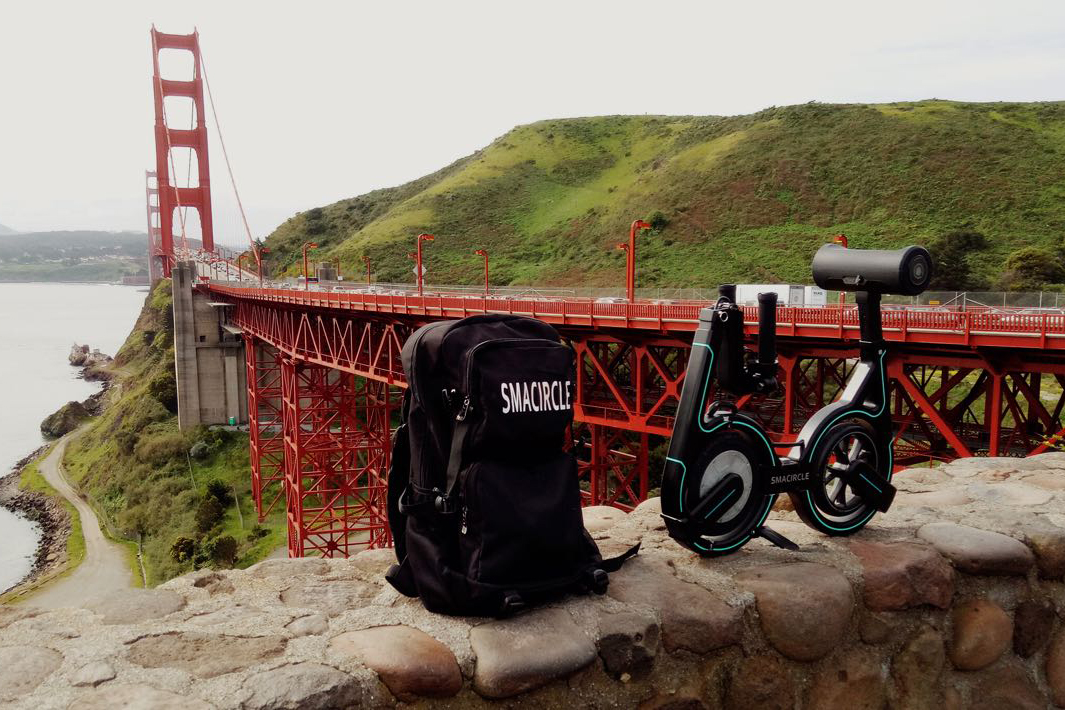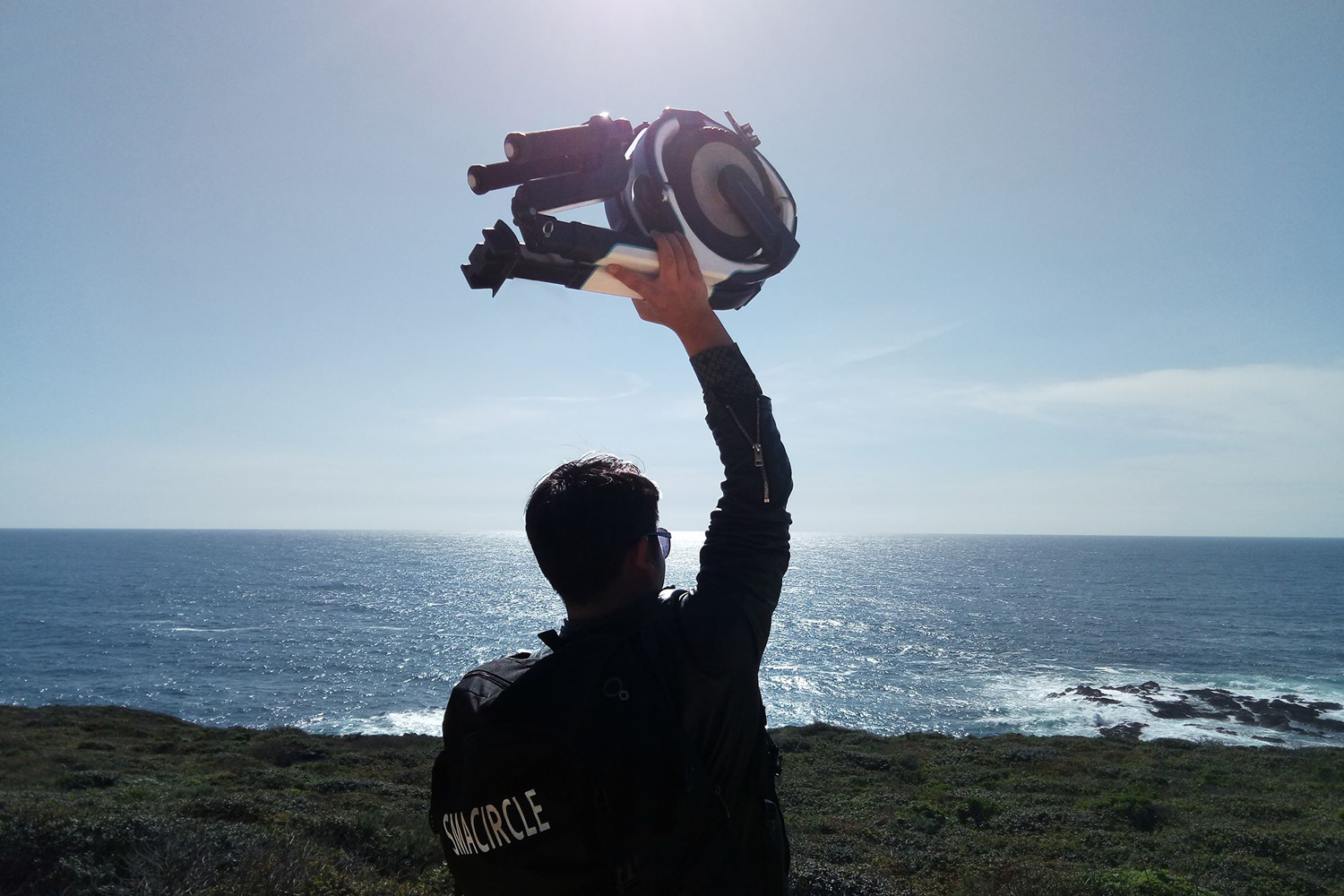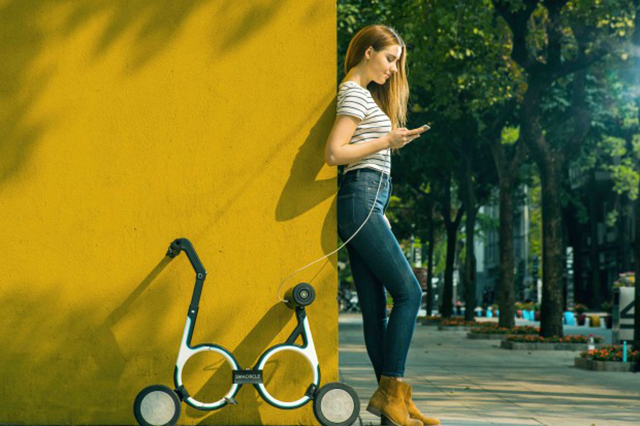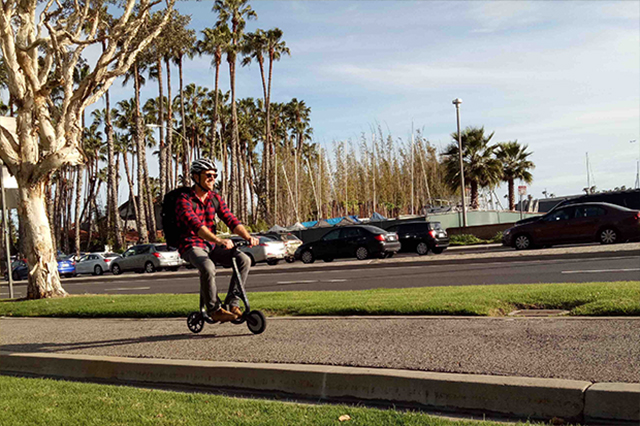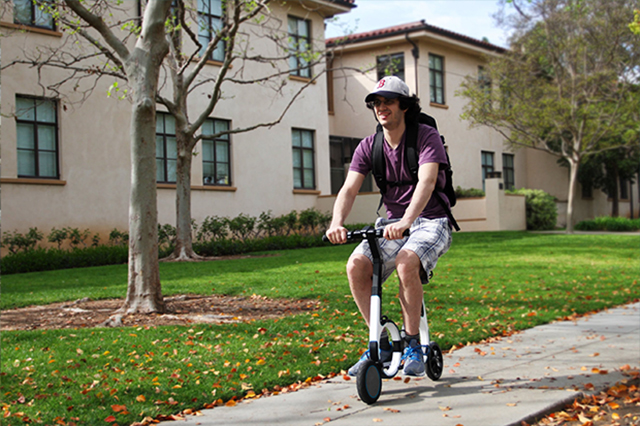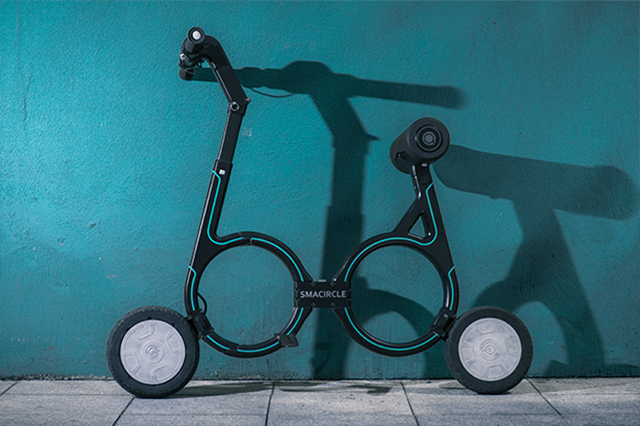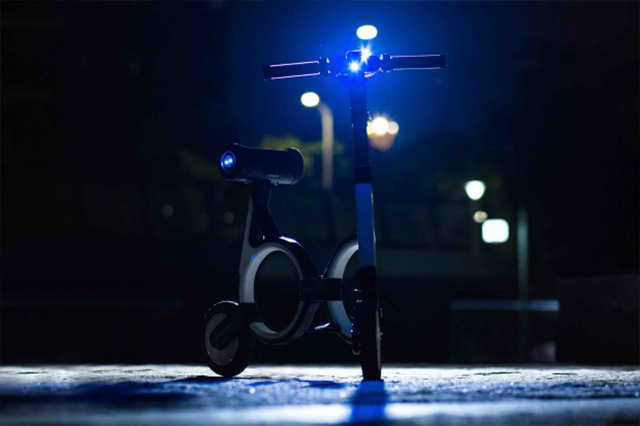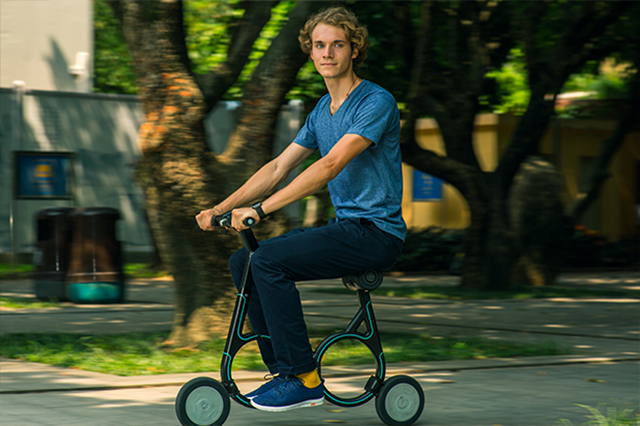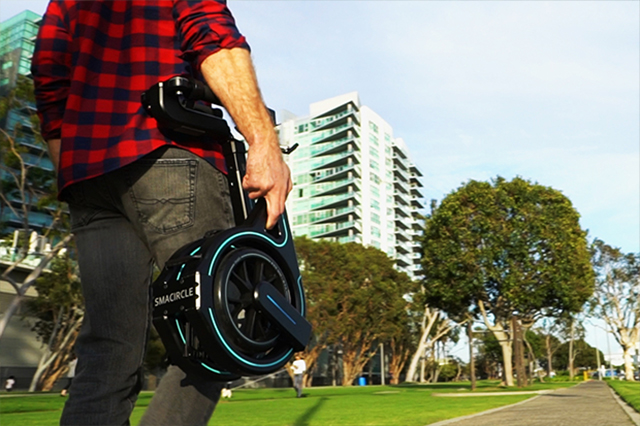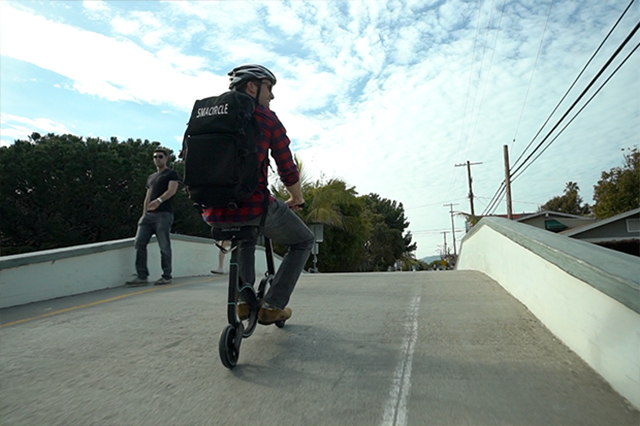Looking from some angles like an elaborately designed pair of (very large) spectacles, the ebike’s strong carbon fiber frame tips the scales at just over 15 pounds and can handle anyone weighing up to 220 pounds. Handily, the S1 folds up into such a tight package — and does so in a mere 10 seconds, apparently — that you can drop it in a backpack once you reach your destination, or carry it directly into your home or office.
To create an ebike that was able to transition from a compact, backpack-friendly design to a fully functional ride was what Smarcicle founder and CEO Shanggui Wu set out to do when he began developing the device. Bikes like the Smacircle S1 are often popular with folks with short commutes between a station and the workplace, and the S1’s top speed of 12.4 miles per hour will likely to save you a decent amount of time than if you were to walk the same route.
Of course, one of the burning questions for any potential ebike buyer is: “How long can I ride it for?” The S1 promises a one-hour ride at top speed, and twice that at 6 mph. The bike’s lithium-ion battery, tucked away in the seat, takes about 2.5 hours to fully recharge. Run out of juice mid-ride and you’ll have to carry it or shove it in your bag, however, as there’s no manual ride option. That said, you will still be able to coast down any slope you might happen to be upon when the battery dies.
An accompanying mobile app for iOS and Android lets you monitor battery usage and speed via your smartphone, which you can slot in the center of the handlebars. Speed is controlled either via the app or a built-in throttle, and other features include electronic brakes and built-in lights for night riders.
Shenzhen, China-based Smacircle smashed through its $30,000 funding goal on Indiegogo over the summer, and is gearing up for a mid or late-February release following the Chinese New Year. If you back the project to the tune of $778, you’ll also receive a spare battery and a dedicated S1 backpack, which seems like a steal when you consider that the ebike is expected to retail for $1,500 when it launches in the United States. Either way, it’s certainly cheaper than our favorite ebikes.
Update: Added CES info and video.

